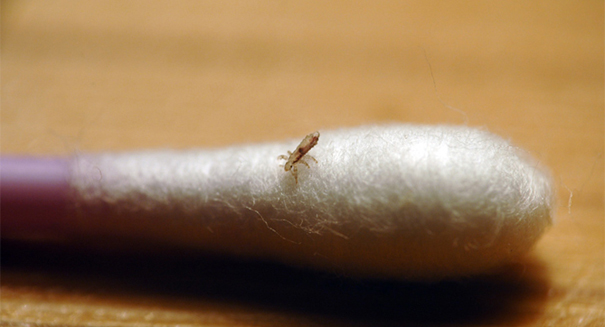
It's one of the biggest outbreaks in recent years and it's spreading across the United States.
A strain of mutant lice has invaded 25 states, and they have become resistant to most common treatments, says an alarming new report.
Head lice are an unpleasant phenomenon that is difficult enough to deal with, but new research indicates that a strain of mutant lice has invaded 25 U.S. states that is resistant to typical treatments available over the counter, according to a Yahoo report.
The findings were presented at the American Chemical Society’s National Meeting and Exposition this week by Southern Illinois University assistant professor Kyong Sup Yoon.
Yoon and a team of researchers made their findings by collecting samples from 30 states in the U.S., finding that 104 out of 109 of the lice populations had a high amount of gene mutations, making it difficult to eradicate them with standard pyrethroids treatments. Pyrethroids refer to common insecticides that include an ingredient common in head lice treatment products known as permethrin.
What does that mean for you? If your child gets head lice, simply going to your local pharmacy for a standard head lice treatment may not work. And you may not have a lot of options other than to wait them out.
Yoon’s study continues as he called the findings “alarming.” He said that the mutant lice is likely in at least 25 states, but may be in even more.
In untested states, the results are so far bad, with Michigan begin the only one to have a population of lice that appears relatively treatable using readily available treatments.
It’s an unpleasant reality for the public, but one Yoon says has been relatively well-known to the research community with the proliferation of lice that are resistant to standard pyrethroid treatments.
These lice populations have developed a resistance in much the same way as bacteria and viruses develop resistance to antibiotics: by genetic mutations thanks to a product that is widely available and used much too frequently. Because the head lice treatments are available without a prescription, they are often overused, allowing the lice to develop immunity to it over time.
These “super lice” are now spreading, which is a big problem. Permethrin was the perfect treatment for lice as it wasn’t harmful to humans — now that these lice are becoming immune to it, it may mean the medical community has lost a major tool.
All is not lost, however. Pharmaceutical companies have developed some products that can eliminate lice, you just need to get a prescription to use them.

There are some home remedies as well that are both cheap and won’t harm your child. You can use essential oils like nutmeg oil, tea trea oil, or clove oil, or you can use vinegar.
And you can still use the traditional lice-killing treatments like Ovide or Sklice. Just don’t overuse the over-the-counter treatments — if it’s not working, call your doctor.